Council newsletter, Nov 2023

AFA Horizon – Council 16 newsletter (BOI, PAE, SEA, GEG)

In case you missed the last newsletter
Open Enrollment
Annual Benefits Enrollment is now open and will run through Nov. 17. This is the one time each year you can make changes to your benefit elections, with changes effective Jan. 1, 2024. You do not need to confirm your benefits if you’re not making changes; however, we encourage you to review your coverage. You must re-enroll in Flexible Spending Accounts and the Health Savings Account each year to continue participating. Review your elections and make changes before Nov. 17 at 10 p.m. Pacific time.
Native American History Month
November marks the beginning of Native American Heritage Month; a month-long celebration of the histories, cultures, contributions, and achievements of Native Americans to the United States.
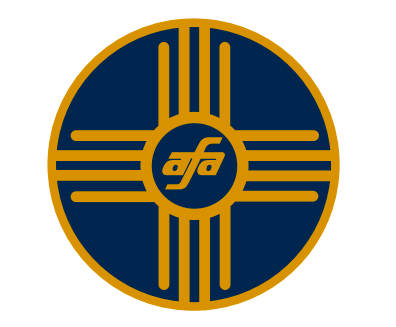
In 2021, the AFA Executive Board passed a resolution establishing our heritage month program and pin, recognizing Native American Flight Attendants and their contributions and influence to the history, culture, and achievements of the U.S. Friday, November 25 is Native American Heritage Day.
We have grounded our Diversity and Inclusion pins around color and symbols. This pin includes the Native American sun symbol in gold surrounded by the color blue to represent where Flight Attendants spend our time — in the sky.
History
The first American Indian Day in a state was declared on the second Saturday in May 1916 by the governor of New York. Several states celebrate the fourth Friday in September. In Illinois, for example, legislators enacted such a day in 1919. Presently, several states have designated Columbus Day as Native American Day, but it continues to be a day we observe without any recognition as a national legal holiday.
In 1990, President George H. W. Bush approved a joint resolution designating November 1990 “National American Indian Heritage Month.” Similar proclamations, under variants on the name (including “Native American Heritage Month” and “National American Indian and Alaska Native Heritage Month”) have been issued each year since 1994.
Social Gathering
The encouragement of all of our voices uniting as one gives our Negotiating Committee its power. To be able to negotiate the most favorable agreement possible we have to stand together in unity. Everyone must be informed of what is taking place and be engaged in this process in order to demonstrate our support and solidarity. Now Is The Time to Get Involved.
LEC 16 Officers are personally hosting a social gathering for Council 16 Members (BOI, PAE, SEA, GEG). Join us TUESDAY, NOVEMBER 7th from 15:00-19:00 in DOWNTOWN SEATTLE (4 blocks from light rail station, 1 mile from Seattle ferry terminal, and plenty of nearby paid street & garage parking). RSVP REQUIRED to attend. RSVP closes at 17:00 on Friday November 3rd.
Event will be canceled if there is a lack of RSVPs. Please join us at this social!

Timeline of Events

Review ‘Negotiations Process’ below to get a better understanding of what to expect as we go through the negotiations process.
Strength in numbers
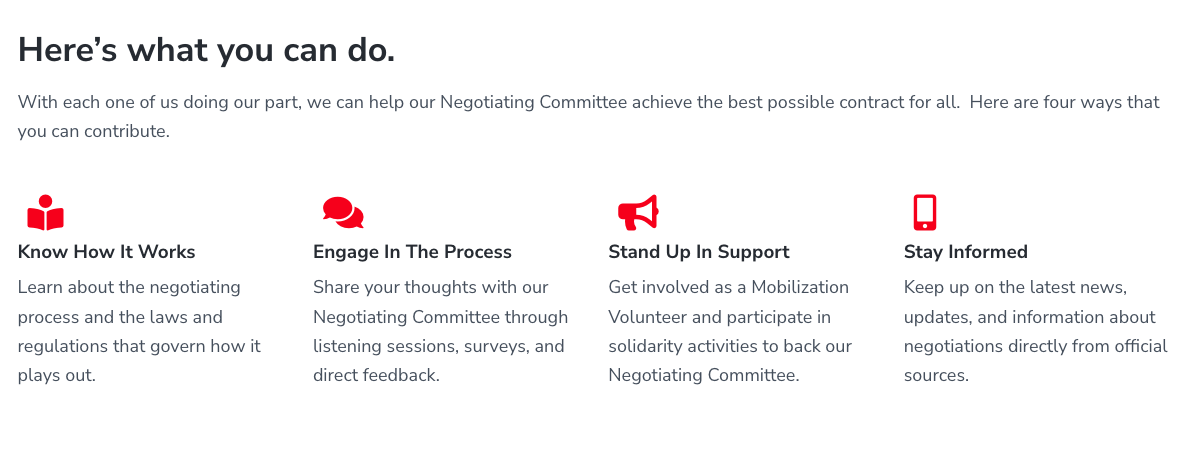
Stay informed via our website and sign-up to receive newsletters & text messages
AFA is YOU!
Our Union isn’t just one person, it’s all of us working together to achieve a greater good. It will take support from everyone to achieve the best possible contract during negotiations.
Negotiations Process
Our contract negotiating process is governed by the Railway Labor Act (RLA). The RLA is a United States federal law that governs labor relations in the railroad and airline industries. The Act, passed in 1926 and amended in 1934 and 1936, seeks to substitute bargaining, arbitration and mediation for strikes as a means of resolving labor disputes. Its provisions are enforced under the National Mediation Board (NMB).
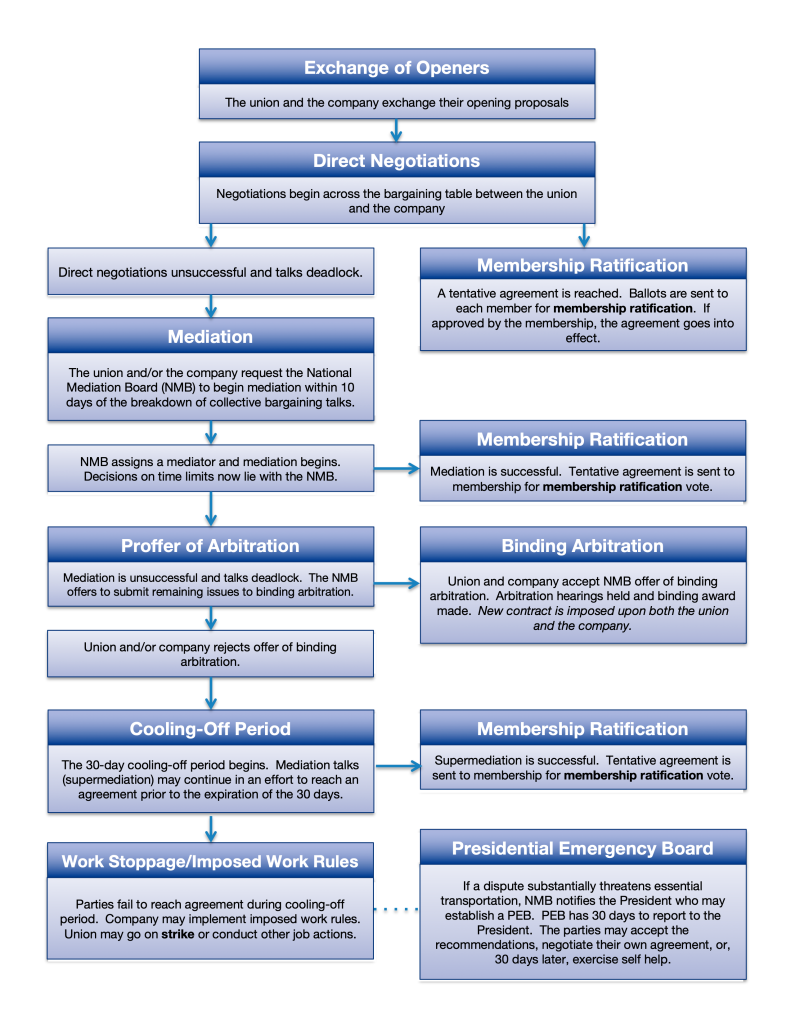
Under the RLA, there’s a specific process that must be followed when negotiating a collective bargaining agreement (CBA). That process starts with direct negotiations between the Union and the company. If direct negotiations are unsuccessful, a mediation process begins to resolve the remaining disputed items.
Should mediation reach the point where no further progress can be made, the NMB may offer to submit the remaining disputed issues to voluntary but legally binding arbitration. If the offer of arbitration is rejected by either the Union or the company, either side can petition the NMB to be released from further negotiations. Once released, a 30-day cooling off period begins. Additional mediation talks may continue and a Presidential Emergency Board (PEB) may be established.
If no agreement is reached after these options have been exhausted, the Union and the company have the option of exercising self help. For the company, this includes options such as imposing work rules at their discretion. For the Union, options may include work stoppages or other job actions.
About Negotiations
Just as the airline industry as a whole is heavily regulated, the process of negotiating a collective bargaining agreement is also governed by a series of regulations and laws. The primary law that governs how the Union and company go about negotiating a contract is called the Railway Labor Act (RLA). A government agency known as the National Mediation Board (NMB) is responsible for administering the RLA and working to resolve any disputes between Union and company. The process of negotiating a contract, including when the NMB gets involved and what steps must be exhausted along the way, is spelled out and must be followed under the law.
Read on to learn more about the RLA and NMB below.
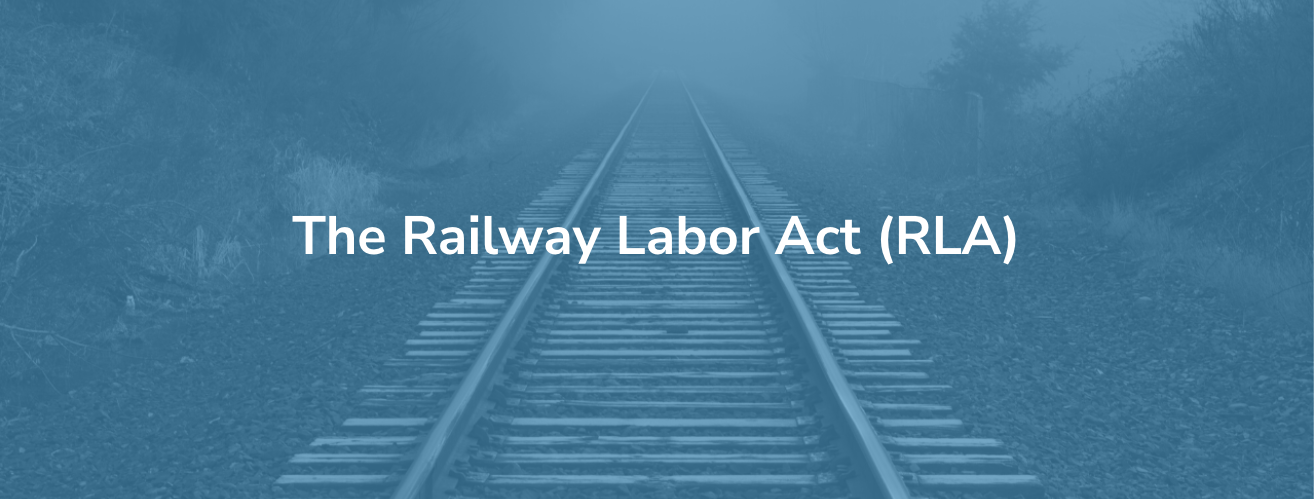
The Railway Labor Act (RLA) was passed in 1926 to allow railroad union workers to resolve disputes with management while minimizing the potential for interstate commerce disruptions. The airline industry was folded into the RLA under Title II in 1936. The RLA was the first federal law guaranteeing the right of workers to organize and join unions and elect representatives without employer coercion or interference. The RLA makes it the duty of all carriers and their employees to exert every reasonable effort to voluntarily settle disputes. Negotiations procedures were historically contained in Section 6 of the RLA, which is why one often hears “Section 6” as a catch-all phrase for everything having to do with negotiations under the RLA. The RLA is currently located in 45 USC Chapter 8 Sections 151 – 188.
Who is Covered?
The RLA applies to freight and commuter railroads, airlines, companies directly or indirectly controlled by carriers who perform services related to transportation of freight or passengers and the employees of these railroads, airlines and companies.
Basic Purpose
- Avoid any interruption to commerce.
- Assist in the prompt and orderly settlement of disputes covering rates of pay, work rules, or working conditions.
- Assist in the prompt and orderly settlement of disputes growing out of grievances or out of the interpretation or application of existing contracts covering the rates of pay, work rules or working conditions.
- Ensure an unhindered right of employees to join a labor union (added in 1934).
- Provide complete independence of organization by both parties to carry out the purposes of the RLA.
“Major” vs. “Minor” Disputes
Disputes are divided into two categories under the Railway Labor Act: “minor” (resolved via the grievance and arbitration process) and “major” (resolved via the negotiations process).
Minor Disputes
Grievances growing out of the interpretation or application of collective bargaining agreements (CBAs). – System boards of adjustment (often administered by a neutral third-party arbitrator) have exclusive jurisdiction over grievance disputes. A system board’s findings are conclusive, and any awards through this process are binding on the parties. Self-help (e.g., work slowdowns or stoppages, worker strikes or management imposed work rules) not allowed.
Major Disputes
Matters affecting rates of pay, rules and working conditions; and the creation or modification of the collective bargaining agreement between the parties. – There is almost total reliance upon collective bargaining for major dispute settlement. Self-help (e.g., strikes and imposed work rules) are permitted after negotiation and mediation procedures have been exhausted.
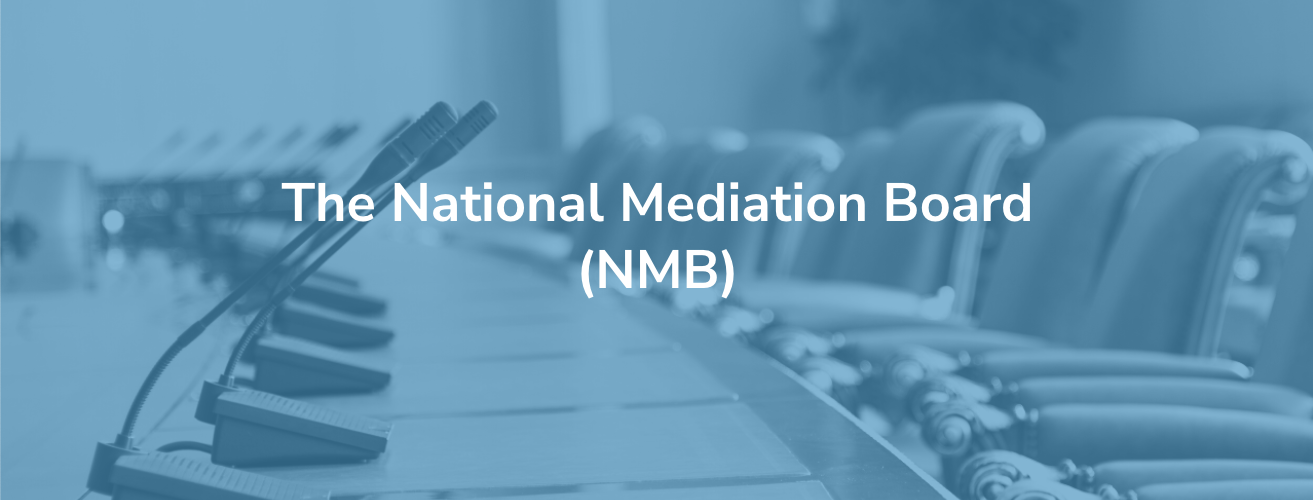
What is the National Mediation Board (NMB)?
The National Mediation Board (NMB) is an independent United States government agency that is responsible for facilitating labor-management relations within the U.S. airline and railroad industries. The board was established by the 1934 amendments to the Railway Labor Act of 1926 and derives its authority from the same.
Board Members
The NMB is headed by a three-member Board. Appointees are nominated by the President and confirmed by the Senate. The Board Members select a Chairman from amongst themselves, usually on an annual basis. Terms of appointment for Board Members are three years, but they may continue to serve until they are replaced.
What does the NMB have to do with our contract negotiations?
The NMB has authority under federal law as the national mediator for collective bargaining disputes in the airline and railroad industries. Under the RLA, if direct negotiations between the Union and the Company are unsuccessful, mediation facilitated by an NMB mediator is the next step in the negotiating process. The NMB may also, at its own discretion, impose mediation upon the parties if it believes that doing so is in the best interest of the public.
Neither the Union nor the Company can exercise “self help” without first attempting to resolve any remaining collective bargaining disputes through mediation and being released from further negotiations by the NMB.


Crew Room Sit
There will be a SEA crew room sit on November 21st; 09:00-15:00.
We look forward to seeing you and getting your perspectives.
Council Status Report
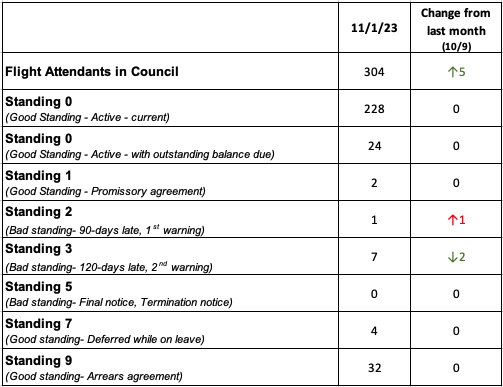
If you have an unresolved outstanding balance pay online. If you happen to find yourself in an arrears situation and do not know the amount owing or have any questions regarding what months you owe, please contact Council leadership. We are here to help!
Vacation Bidding, Round 2
NOW OPEN! The Company will post any remaining vacation weeks after the initial awards are posted. Flight Attendants may submit bids for remaining available weeks until 17:00 on November 22. These bids will be honored in domicile seniority order no later than November 30.
After the second round of vacation awards
Flight Attendants will be awarded any remaining available vacation periods on a “first come, first served” basis; however, a Flight Attendant may not request a vacation unless she/he has an uncommitted 17 hours of vacation time accrued at the time of the request and the request must be submitted to the Managing Director of Inflight/designee at least thirty (30) days prior to the bid period containing the vacation period. If a Flight Attendant requests a vacation period that is not then available, they can request to be placed on a “first come, first served” wait list for that period. Should the vacation later become available, it wil be awarded to the Flight Attendant at the top of the waiting list. Flight Attendants are responsible for removing themselves from the wait list if they no longer have an uncommitted seven days or no longer desire that vacation period.
Know your contract
- Article 3.F – “A Flight Attendant shall be paid four (4) credit hours, in addition to all other compensation, for each of the following holidays if she/he works a Trip or is available for Reserve assignment on that day. New Year’s Day, Memorial Day, Veteran’s Day, Thanksgiving Day, Christmas Day.”
- Article 5.A.4.g – “Each Flight Attendant will receive eight (8) golden days per calendar year on January 1. Golden days will not accrue or carry over to the following year.”
Until the next check-in, fly safe!
“Stronger Together, Better Together”


